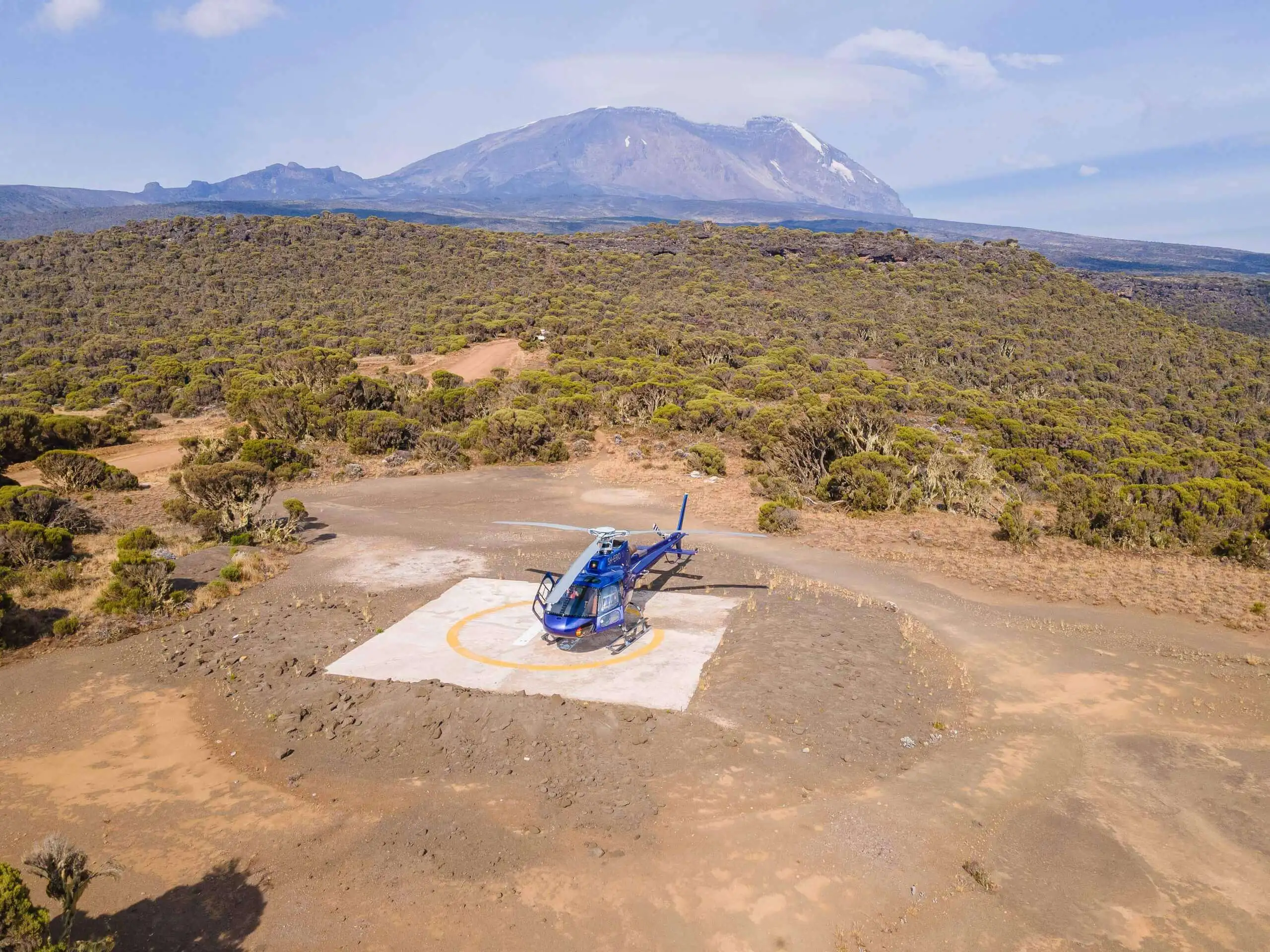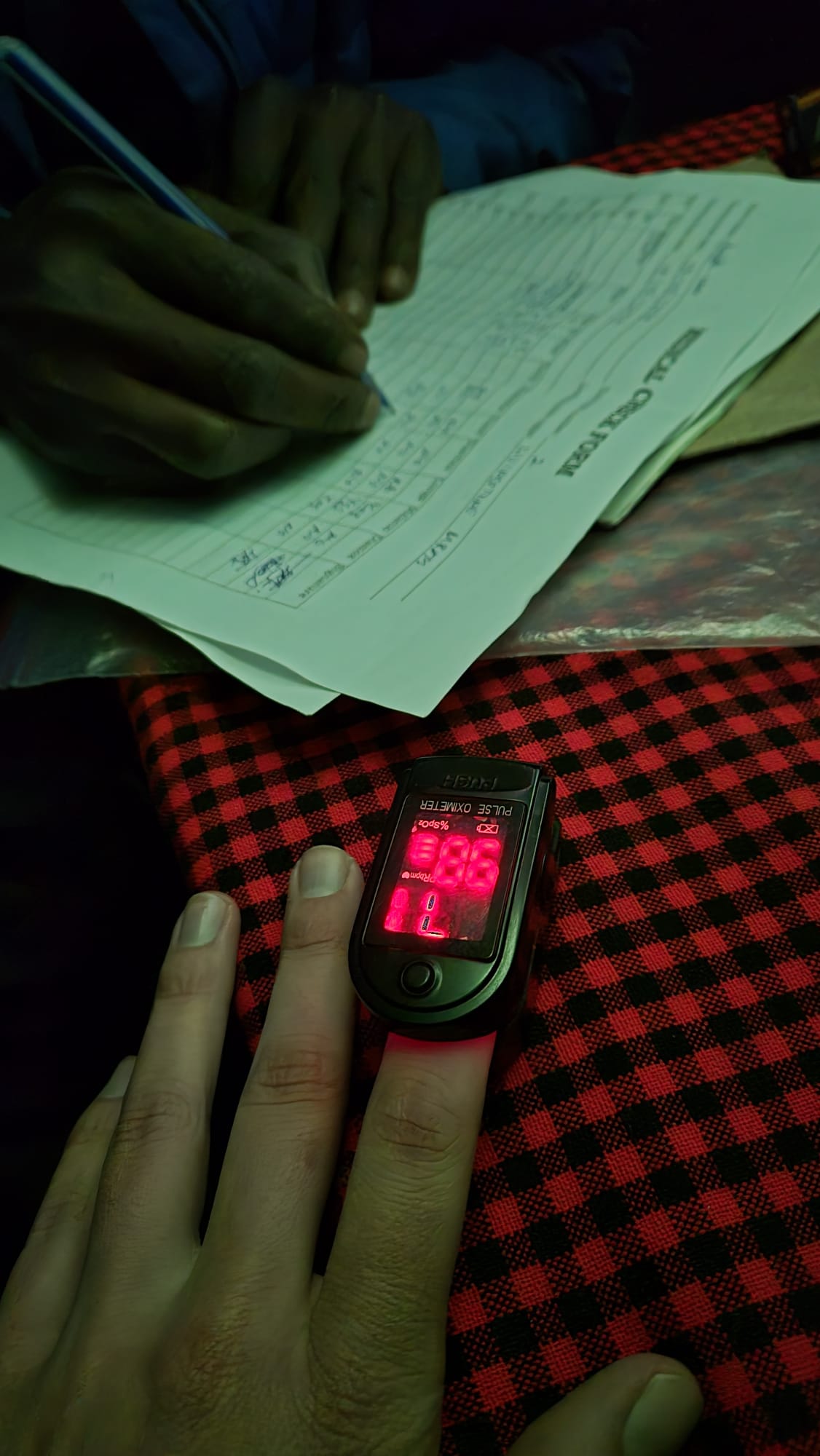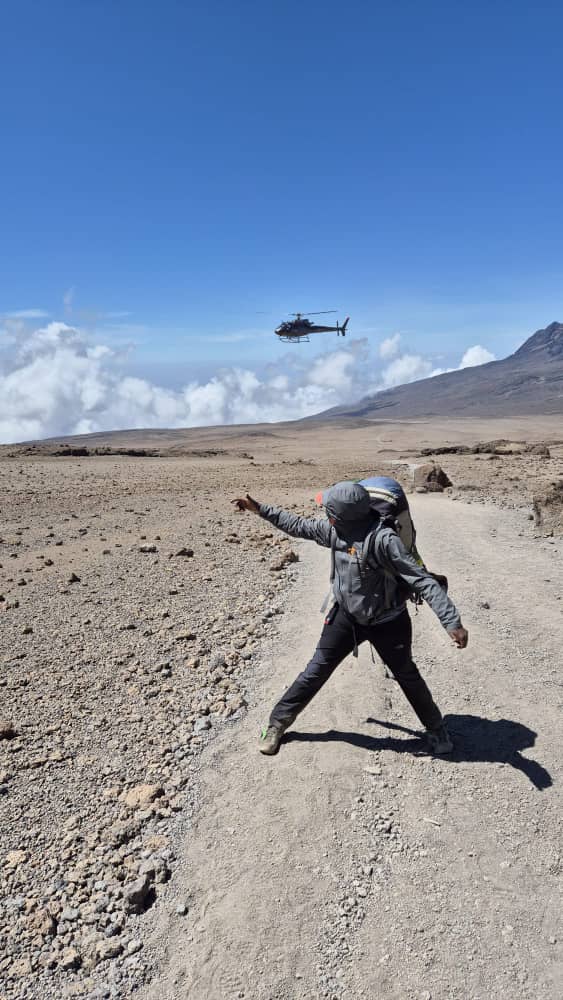Kilimanjaro Rescue & Safety
Why Safety Matters
Safety isn’t just a priority at Discount Treks, it’s our foundation. Our guides and staff bring decades of collective experience, delivering a climb where risks are minimized and support is maximized. We exceed park safety standards, equipping every trek with essential tools oxygen, first-aid kits, communication devices and aligning with rescue services to cover all contingencies. Our high success rates reflect this commitment, but we never compromise well-being for ambition; if descent is necessary, we act decisively. With Discount Treks, you’re in trusted hands, free to focus on the thrill of the climb.

Safety Measures on the Mountain
Climbing Kilimanjaro requires careful oversight, and Discount Treks employs a range of proactive safety measures to protect you at every elevation.
Our guides, with years of mountain experience, conduct daily health checks using pulse oximeters to monitor oxygen saturation and heart rate, identifying early signs of altitude sickness before they escalate. Routes are selected and paced to optimize acclimatization longer itineraries like the 8-9 day Northern Circuit allow gradual ascent, contributing to our summit success rate exceeding 95%. Weather conditions are assessed continuously, with our staff adjusting plans if storms or high winds threaten safety, particularly on exposed sections like the summit approach.
All climbers receive a thorough pre-trek briefing covering trail hazards, proper gear use, and the importance of hydration 3-4 liters daily to combat altitude effects. Our team carries comprehensive first-aid kits, including medications for pain, nausea, and minor injuries, ensuring immediate care when needed.
Group sizes are kept manageable, typically 2-12 climbers, allowing personalized attention from guides and fostering a secure climbing environment.
Altitude Sickness Prevention and Response
Altitude sickness remains the most common risk on Kilimanjaro, and Discount Treks takes a meticulous approach to its prevention and management.
Our guides emphasize the “pole pole” (slowly, slowly) philosophy, encouraging a steady pace to minimize strain and aid oxygen adaptation, especially above 2,500 meters where symptoms like headaches or fatigue may emerge. Routes with built-in acclimatization days, such as the 6-day Marangu or 7-day Lemosho, reduce the likelihood of Acute Mountain Sickness (AMS) by allowing your body time to adjust.
Should mild symptoms occur, our staff responds with rest, hydration, and over-the-counter remedies like ibuprofen, often resolving discomfort within hours. For severe cases such as High Altitude Pulmonary Edema (HAPE) or High Altitude Cerebral Edema (HACE), marked by breathing difficulties or confusion our guides are trained to act swiftly, administering supplemental oxygen from portable cylinders and initiating an immediate descent, the only definitive treatment. Daily monitoring ensures early intervention, and our staff’s expertise keeps climbers safe while maximizing summit chances.


Rescue Procedures
In the rare event of an emergency, Discount Treks collaborates seamlessly with Kilimanjaro National Park’s rescue infrastructure to ensure rapid response.
Kilimanjaro National Park operates a stretcher system, deployed by rangers for cases requiring immobilization, such as fractures or extreme exhaustion, with Discount Treks’ staff coordinating logistics on-site.
At higher altitudes (above 4,000 meters), where vehicle access is limited, helicopter evacuation is available through partnerships with private services like AMREF Flying Doctors, weather permitting our team ensures your travel insurance covers this, as it’s a park requirement.
Post-rescue, climbers are transported to medical facilities in Moshi, such as KCMC Hospital, for professional care. Our staff remains with you throughout, managing every step until you’re stable.
